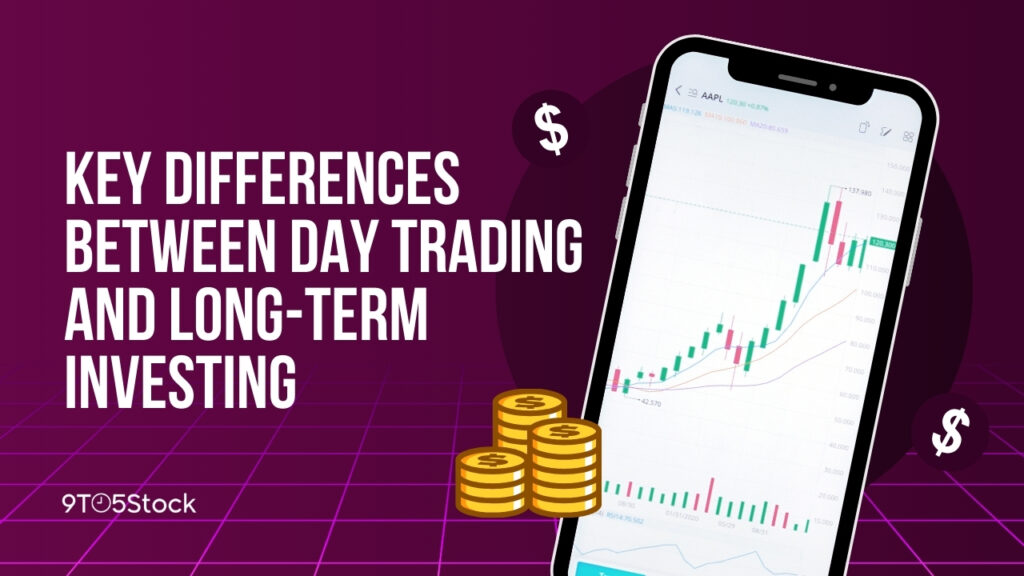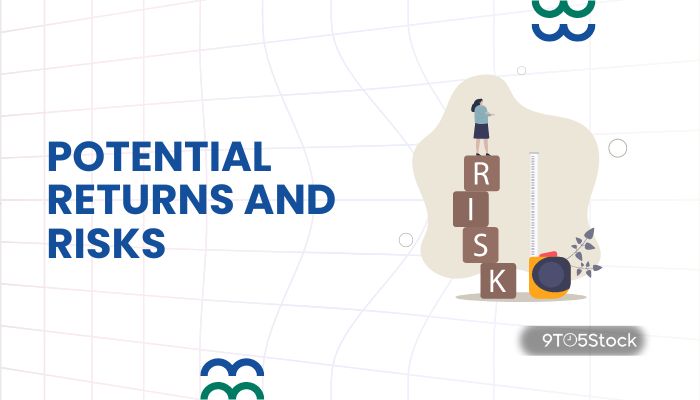In the world of financial markets, two primary strategies dominate the landscape: day trading and long-term investing. Each approach offers its own set of advantages and challenges, catering to different types of investors with varying goals and risk tolerances. Understanding the key differences between these two strategies is essential for determining which one aligns best with your financial objectives and personality.
Key Differences Between Day Trading and Long-Term Investing

Time Horizon
Day trading involves executing trades within a single trading day, aiming to capitalize on short-term price movements. Conversely, long-term investing entails holding assets for an extended period, typically years or decades, with the goal of achieving substantial growth over time.
Risk Tolerance
Day trading requires a high tolerance for risk due to the frequent buying and selling of securities. The inherent volatility and uncertainty of short-term price movements can result in substantial gains or losses within a short timeframe. On the other hand, long-term investing tends to be less volatile, with a focus on the fundamental value of assets and their potential for long-term growth.
Strategies and Techniques

Day Trading Strategies
Scalping
Scalping involves executing numerous trades throughout the day, aiming to profit from small price movements. Traders often focus on highly liquid assets and rely on technical analysis indicators to identify short-term trading opportunities.
Momentum Trading
Momentum trading involves capitalizing on the momentum of a particular asset, buying when prices are rising and selling when they begin to decline. This strategy relies on identifying trends and riding the momentum to generate profits.
Long-Term Investing Strategies
Buy and Hold
Buy and hold strategy involves purchasing assets with the intention of holding them for an extended period, regardless of short-term market fluctuations. This strategy is based on the belief that over time, the value of quality assets will appreciate, leading to significant long-term returns.
Dollar-Cost Averaging
Dollar-cost averaging involves investing a fixed amount of money at regular intervals, regardless of market conditions. This strategy helps mitigate the impact of market volatility by spreading out the purchase of assets over time.
Required Skills and Knowledge

Day Trading Skills
Technical Analysis
Day traders rely heavily on technical analysis to analyze price charts and identify patterns that indicate potential trading opportunities. Understanding technical indicators and chart patterns is essential for making informed trading decisions.
Market Research
Successful day traders conduct thorough market research to stay informed about news, events, and economic indicators that may impact the financial markets. Keeping abreast of market developments is crucial for anticipating price movements and identifying profitable trades.
Long-Term Investing Knowledge
Fundamental Analysis
Long-term investors focus on fundamental analysis to assess the intrinsic value of assets based on factors such as earnings, growth potential, and industry trends. Analyzing financial statements and economic indicators helps investors make informed decisions about which assets to buy and hold for the long term.
Economic Trends
Long-term investors also pay attention to broader economic trends and geopolitical events that may influence the performance of financial markets. Understanding macroeconomic factors helps investors identify opportunities and manage risks effectively.
Time Commitment

Day Trading
Day trading requires a significant time commitment, as traders must monitor the markets closely throughout the trading day. The fast-paced nature of day trading demands quick decision-making and execution, with traders often executing multiple trades within minutes or hours.
Long-Term Investing
Long-term investing requires less frequent monitoring, as investors focus on the long-term growth potential of their assets rather than short-term price fluctuations. Portfolio adjustments are typically infrequent, allowing investors to adopt a more passive approach to managing their investments.
Must Read: Top 5 Best Stock Trading Platforms for Explosive Returns!
Emotional Factors

Psychological Pressures of Day Trading
Day trading can be emotionally taxing, as traders are constantly exposed to the stress and anxiety of making split-second decisions in a volatile market environment. The fear of missing out (FOMO) on potential profits or the fear of losing money can lead to impulsive decision-making and irrational behavior.
Emotional Stability in Long-Term Investing
Long-term investing requires patience and discipline, as investors must withstand short-term market fluctuations without succumbing to emotional reactions. Maintaining a long-term perspective and avoiding impulsive decisions are key to achieving success as a long-term investor.
Potential Returns and Risks

Day Trading Profits and Losses
Day trading offers the potential for high returns, as traders can capitalize on short-term price movements to generate profits. However, the high volatility and leverage involved in day trading also increase the risk of substantial losses, especially for inexperienced traders.
Long-Term Investing Outcomes
Long-term investing offers the potential for steady, compounding growth over time, as investors benefit from the power of compound interest and the long-term appreciation of assets. While the returns may be more modest compared to day trading, long-term investing tends to be less risky and more predictable over the long term.
Regulatory Considerations

Regulations for Day Traders
Day traders are subject to specific regulations, such as the pattern day trader rule, which imposes restrictions on traders with small account balances. Additionally, day traders must adhere to margin requirements set by regulatory authorities to mitigate the risks associated with leverage.
Regulatory Impact on Long-Term Investors
Long-term investors may also face regulatory considerations, particularly concerning tax implications and retirement account rules. Understanding the tax treatment of investment income and the rules governing retirement accounts is essential for optimizing investment strategies and maximizing returns while staying compliant with applicable regulations.
Lifestyle and Personality Factors

Day Trading Lifestyle
Day trading requires a lifestyle that thrives in a fast-paced and high-stress environment. Traders must be able to make quick decisions under pressure and remain focused throughout the trading day. The intense nature of day trading may not be suitable for individuals who prefer a more relaxed and predictable lifestyle.
Long-Term Investing Suitability
Long-term investing is well-suited for individuals who possess patience and discipline, as success in this approach requires a long-term perspective and the ability to withstand short-term market fluctuations. Long-term investors can enjoy a more flexible lifestyle, as they are not bound by the constant monitoring and active trading required in day trading.
Conclusion
In conclusion, the decision between day trading and long-term investing depends on various factors, including your financial goals, risk tolerance, time commitment, and personality. Day trading offers the potential for high returns but comes with increased risk and requires a significant time commitment and emotional resilience. Long-term investing, on the other hand, provides steady growth over time with lower volatility and less stress, making it suitable for individuals with a patient and disciplined approach to investing. Ultimately, the right choice depends on your individual circumstances and preferences.
Also Read:
Stock Market Investing for Beginners: Avoid These Common Mistakes (2024)
Top 10 Best Dividend Stocks to Buy Right Now!
Grange Resources Limited (GRR) Dividend Breakdown: Dates and Trends You Need to Know
FAQs
Is day trading suitable for beginners?
Day trading can be challenging for beginners due to its fast-paced nature and high-risk profile. It requires a solid understanding of market mechanics, technical analysis, and risk management techniques.
What is the minimum capital required for day trading?
The minimum capital required for day trading varies depending on regulatory requirements and the broker’s policies. In the United States, day traders must maintain a minimum account balance of $25,000 to comply with the pattern day trader rule.
Are there any tax implications associated with day trading?
Day traders are subject to special tax rules, such as the treatment of short-term capital gains and losses. It’s essential to consult with a tax advisor to understand the tax implications of day trading and ensure compliance with tax laws.
What are the advantages of long-term investing?
Long-term investing offers several advantages, including the potential for steady growth over time, lower volatility, and reduced stress compared to day trading. It also allows investors to take advantage of compound interest and benefit from the long-term appreciation of assets.
How can I determine which investment strategy is right for me?
To determine the right investment strategy for you, consider your financial goals, risk tolerance, time horizon, and lifestyle preferences. Consult with a financial advisor to evaluate your options and develop a personalized investment plan that aligns with your objectives and circumstances.
Hello guys! My name is David Wilson, and I'm a passionate stock market enthusiast and the founder of 9to5Stock. With a deep understanding of market dynamics and a commitment to empowering others, I share valuable insights, strategies, and updates to help investors like you make informed decisions and achieve financial success. Welcome to our community, and let's thrive together in the world of investing!
